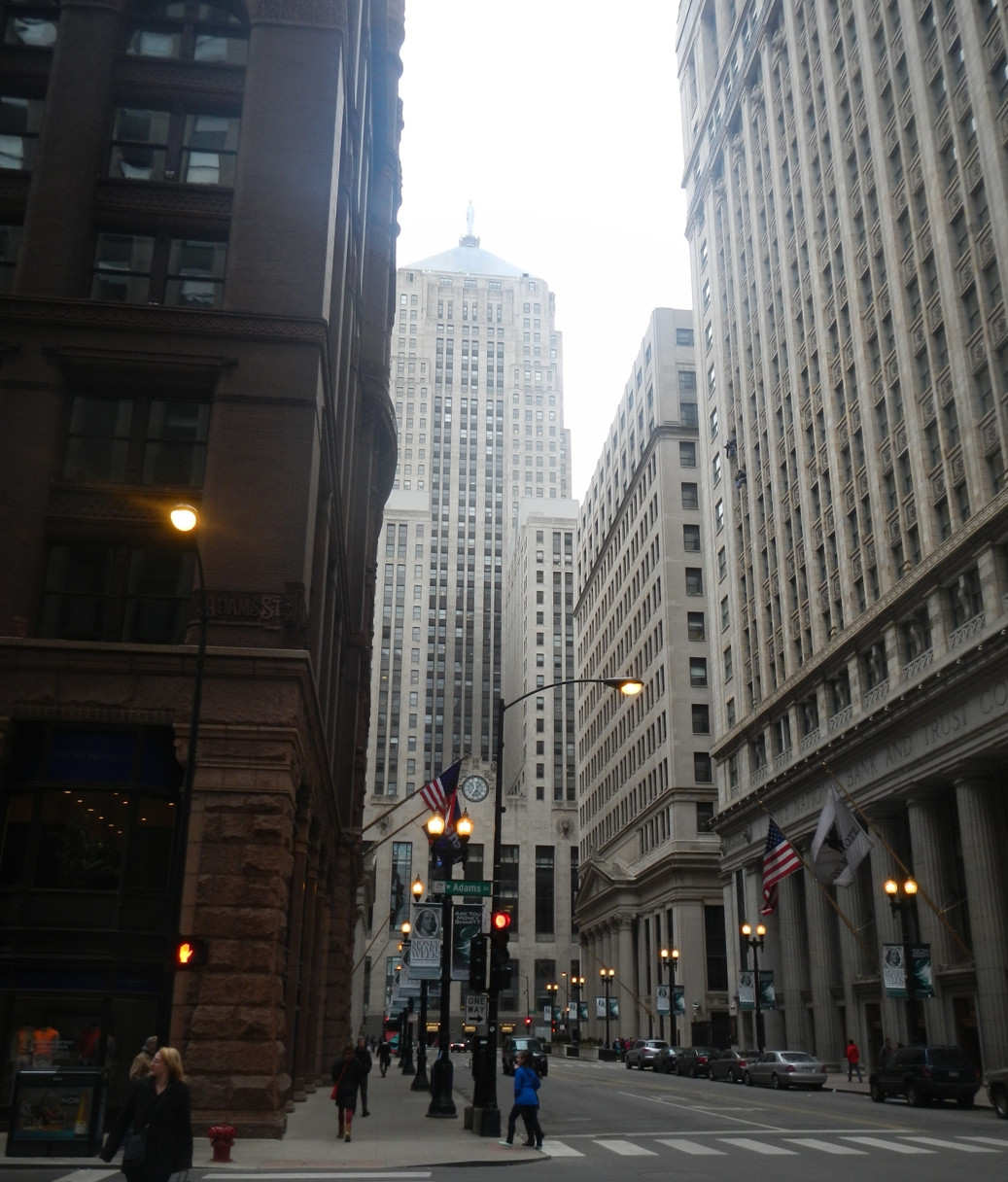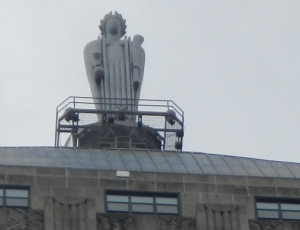For those in the financial world, when you think of New York, Wall Street comes to mind; for London, it’s the City; and for Tokyo, Kabuto-cho. In Chicago, the equivalent is La Salle Street. This iconic street is particularly known as a narrow urban canyon, the heart of the city’s financial district, stretching for three blocks from Madison to Jackson Street.
 La Salle Street canyon view looking south from Adams Street in Chicago's Financial District.
La Salle Street canyon view looking south from Adams Street in Chicago's Financial District.
The Heart of Chicago’s Financial District
This concentrated area of La Salle Street is lined with what are often referred to as “temples of commerce”—imposing bank buildings designed with classical Greek architectural influences. Dominating the southern end of this financial canyon is the Chicago Board of Trade Building, famously crowned with a statue of Ceres, the Roman goddess of agriculture. Within and around this pivotal location are Chicago’s renowned futures markets, major banking institutions including the Federal Reserve Bank of Chicago, significant insurance companies, and the Chicago Stock Exchange. This three-block stretch embodies the core of Chicago’s financial power and activity.
Beyond the Financial Center: The Extended La Salle Street
While most famously known for its financial district, La Salle Street extends far beyond these few blocks. In reality, La Salle Street is a lengthy Chicago thoroughfare that, despite some interruptions, runs for approximately 15 miles. It stretches from as far north as 1400 North Avenue down to 14600 South, reaching into the suburban area of Dalton. This extensive reach highlights that while its financial core is crucial, La Salle Street is also an integral part of Chicago’s broader urban and suburban landscape.
A Street with History: Naming and Origins
Interestingly, the street name is officially “La Salle,” with a space, though it’s frequently written as “LaSalle” without a space. Both versions are simpler than the full name of the French explorer it honors: René Robert Cavelier, Sieur de La Salle, who explored the Chicago area in the 1680s. La Salle Street’s presence is documented as far back as the original 1830 plat of Chicago, demonstrating its early establishment in the city’s layout. Historically, parts of La Salle Street were known by different names such as Arnold, Griswold, Jamot, Oswell, or Reade. Notably, the downtown section between Jackson and Taylor was even called Pacific Avenue until 1901, showcasing the evolving history of this significant Chicago street.
 Statue of Ceres, goddess of agriculture, atop the Chicago Board of Trade building on La Salle Street.
Statue of Ceres, goddess of agriculture, atop the Chicago Board of Trade building on La Salle Street.
Landmarks and Notable Locations
Beyond finance, La Salle Street is also home to important civic buildings and residential areas. Between Washington and Lake Streets, you’ll find Chicago’s City Hall and the James R. Thompson Center, an iconic building of the State of Illinois. For commuters, Metra’s LaSalle Street Station is a key transportation hub situated between Van Buren and Congress Parkway. Further north of the Chicago River, La Salle Street is marked by Carl Sandburg Village, recognized as one of Chicago’s pioneering modern residential high-rise developments. For the majority of its length, La Salle Street functions as an ordinary city street, interwoven into the daily life of Chicagoans.
Chicago’s La Salle Street is more than just a financial hub; it’s a street with layers of history, diverse architecture, and a significant place in the city’s identity, extending well beyond its famed financial canyon.

